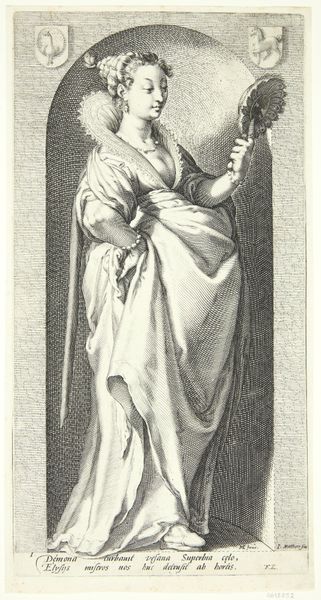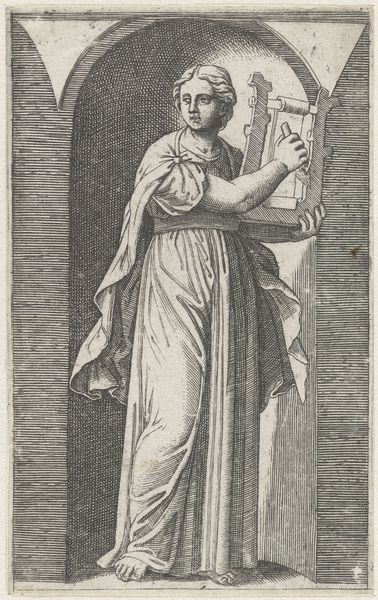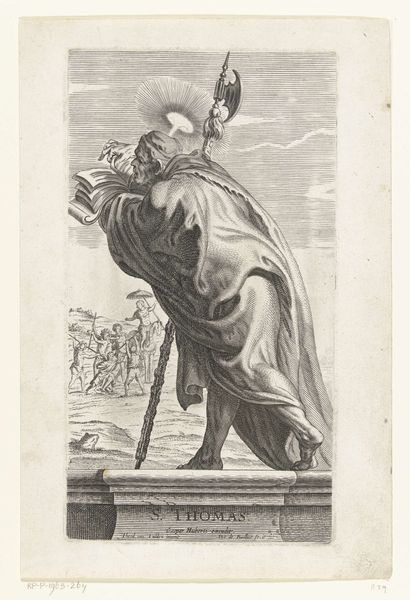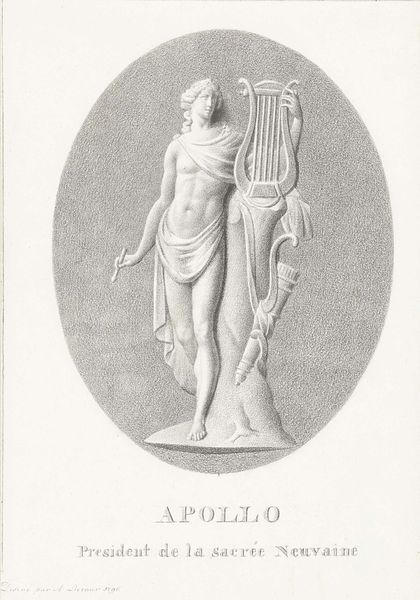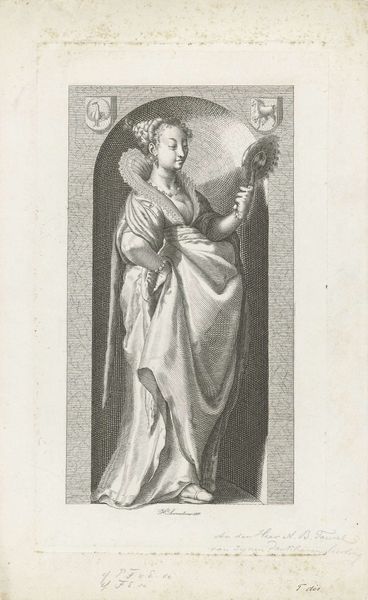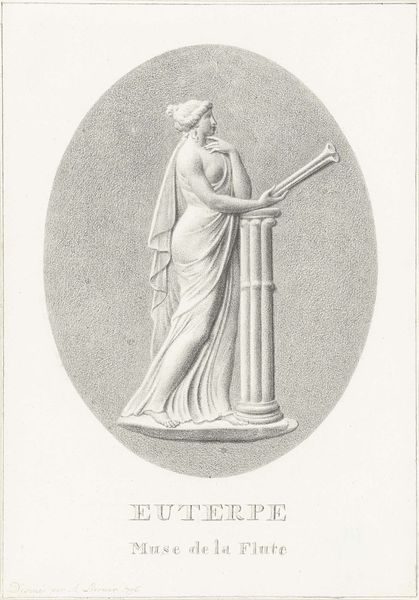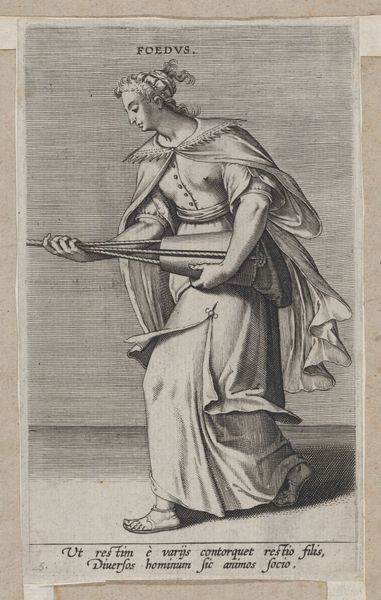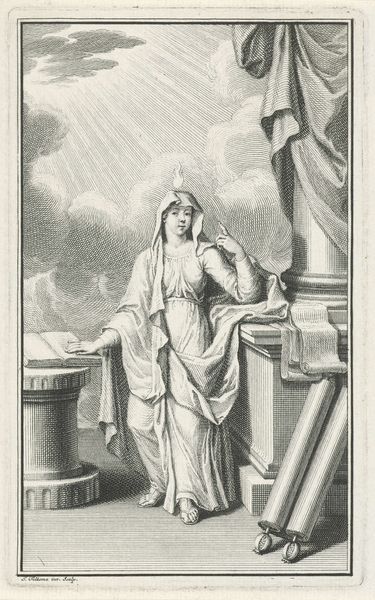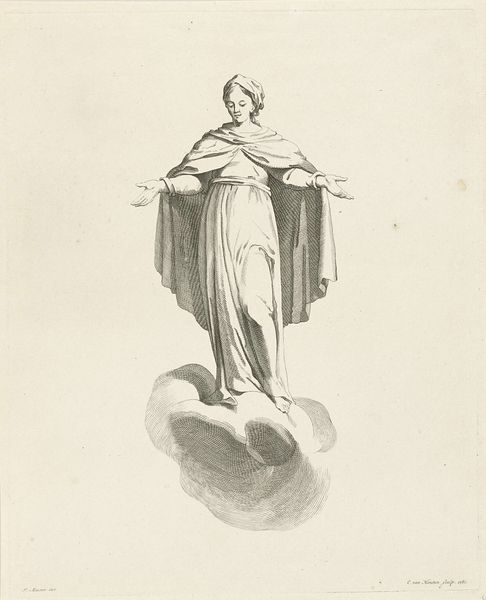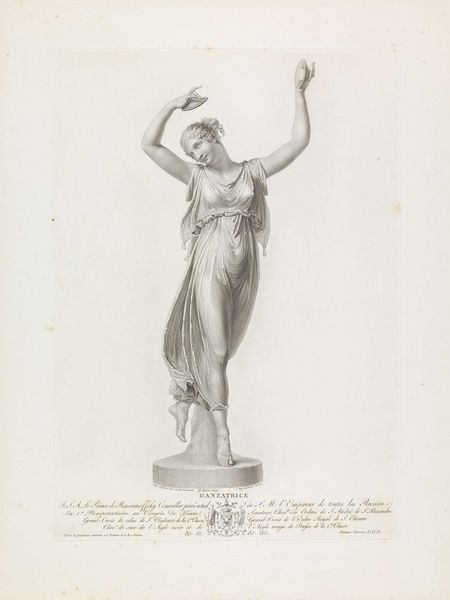
drawing, pencil
#
portrait
#
pencil drawn
#
drawing
#
neoclacissism
#
allegory
#
pencil sketch
#
figuration
#
form
#
pencil drawing
#
pencil
#
line
Dimensions: height 241 mm, width 168 mm
Copyright: Rijks Museum: Open Domain
Editor: This is "Clio," a pencil drawing from 1796 by Alexander Liernur. It feels very classical in its presentation. The composition, encased within an oval, frames this idealized figure in a gown; I wonder about that contrast. What do you see in this piece, from a formalist perspective? Curator: The strength of the work resides in its clean lines and balanced composition. Observe how Liernur employs line to define form, creating a sense of depth despite the monochrome palette. Note the draping fabric—how would you describe the artist’s treatment of the material? Editor: It looks… careful? There's a lot of attention given to how it falls and folds. The lines really emphasize the way it clings to the figure, showing its form. Curator: Precisely. Liernur masterfully uses line to describe the texture and volume of the drapery. Now consider the oval frame. Does it confine or enhance the central figure? Editor: I think it enhances it. The oval feels like a spotlight, drawing your attention to the figure's posture. She seems frozen but powerful. It directs the gaze but it contains. Curator: Very astute observation. The oval does indeed act as a structuring device, isolating and elevating the figure of Clio. Ultimately, it highlights her symbolic weight and idealized beauty in line and form. Editor: I appreciate your breaking down the composition into line, form, and framing—it reveals so much about what the artist wanted to emphasize. Curator: And that precise visual structure is a key to understanding Neoclassical art. The restraint informs meaning.
Comments
No comments
Be the first to comment and join the conversation on the ultimate creative platform.

